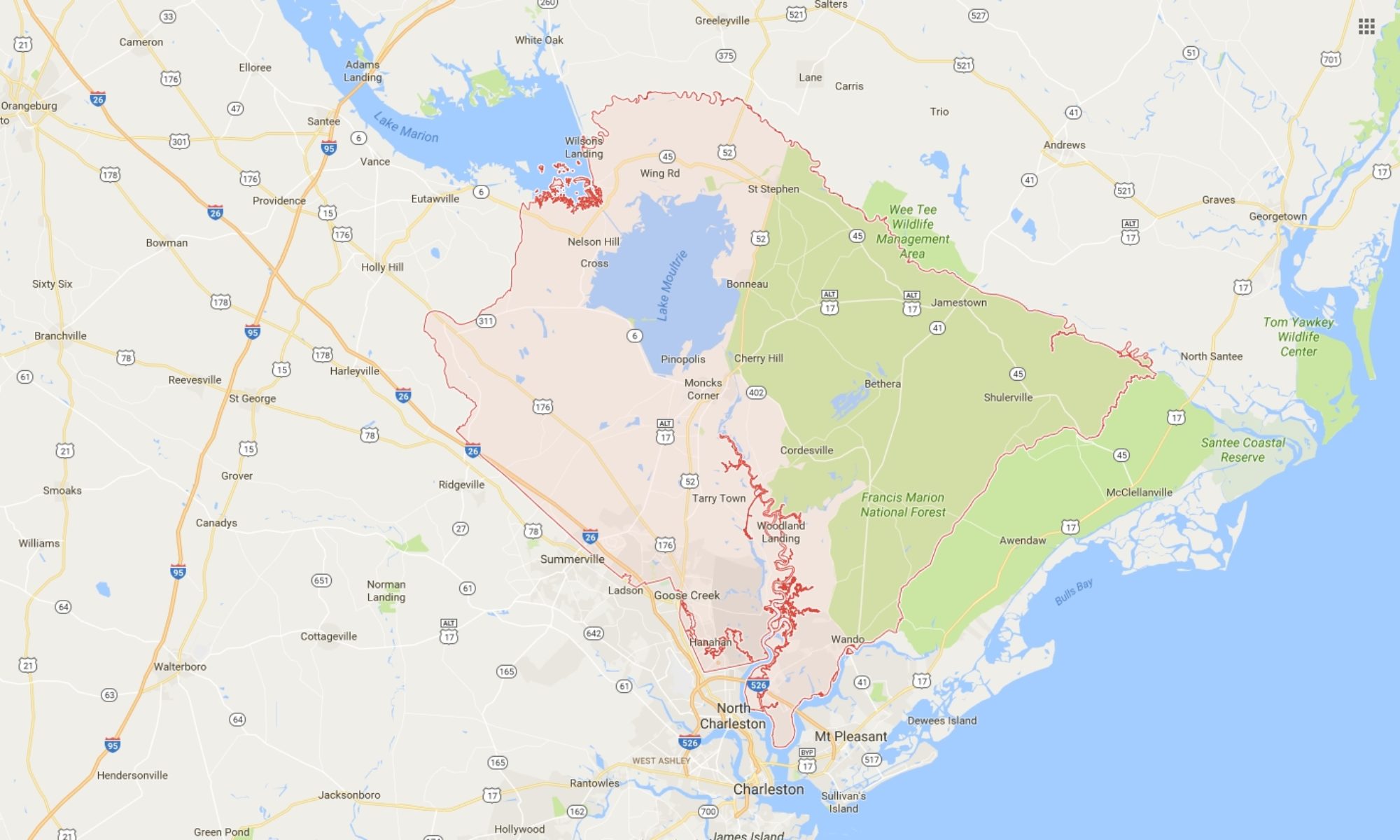Charleston, South Carolina is known for its history. In the 18th century, it served as a trading hub for the Atlantic region of the United States. But it is best known for its war history. Charleston was a battle ground during the American Revolution and the Civil War. While war devastated the once thriving city, it slowly built its way back to the charming town it is today. Continue reading “Charleston Real Estate – A Charming City With a Past”
Daniel Island – the chosen destination for second homes
Full of lush scenery and gorgeous river marshes, Daniel Island South Carolina is the chosen destination for second homes to many people from all over the United States. The island itself was in fact originally purchased in 1947 as the private residence for the Guggenheim family. Continue reading “Daniel Island – the chosen destination for second homes”
Mortgage Fraud Schemes in South Carolina – A Review For SC Criminal Attorneys, Lawyers & Law Firms
Mortgage fraud is problem that has reached epidemic proportions in the United States (US) in general and in South Carolina (SC) in particular. The white collar practitioner should be aware that mortgage fraud is generally investigated by the United States Federal Bureau of Investigation (FBI), although other agencies routinely assist the FBI and/or take the lead in investigating a case. Some of the other federal agencies which investigate mortgage fraud crimes for criminal prosecution include, but are not limited to, the Internal Revenue Service-Criminal Investigative Division (IRS-CID), United States Postal Inspection Service (USPIS), U.S. Secret Service (USSS), U.S. Immigration and Customs Enforcement (ICE), U.S. Department of Housing and Urban Development-Office of the Inspector General (HUD-OIG), Federal Deposit Insurance Corporation-Office of the Inspector General (FDIC-OIG), the Department of Veterans Affairs-Office of the Inspector General (DVA-OIG) and U.S. Bankruptcy Trustees. Continue reading “Mortgage Fraud Schemes in South Carolina – A Review For SC Criminal Attorneys, Lawyers & Law Firms”
South Carolina’s Whistleblower Protections – A Review for SC Attorneys, Lawyers and Law Firms
South Carolina whistleblowers who are employed by a South Carolina state government agency are protected from adverse employment actions when they timely report violations of state or federal laws or regulations or other wrongdoing. South Carolina attorneys, lawyers and law firms who represent SC state government whistleblowers should be aware of the protections afforded to these employees who are fired, demoted, suspended or otherwise subjected to an adverse action in reaction to a report of fraud or other wrongdoing by a public agency or one of its officers or employees. South Carolina whistleblower attorneys, lawyers and law firms should also be aware of the administrative requirements necessary to invoke the protections of the state’s anti-retaliation statute, as well as the relief provisions afforded to such SC whistleblowers. There are also some whistleblower protections for government and private employees who report violations of South Carolina’s occupational safety and health statutes, rules or regulations. Continue reading “South Carolina’s Whistleblower Protections – A Review for SC Attorneys, Lawyers and Law Firms”
Coastal Community Foundation Announces 2017 Reverend Pinckney Scholars
June 14, 2017
11 rising college freshmen receive a total of nearly $80,000, join 2016 cohort in growing program Continue reading “Coastal Community Foundation Announces 2017 Reverend Pinckney Scholars”
Textron Businesses to Feature Military and Commercial Products and Services at Paris Air Show
June 13, 2017 08:00 AM Eastern Daylight Time
PROVIDENCE, R.I.–(BUSINESS WIRE)–Bell Helicopter, Textron Aviation Inc., Textron Aviation Defense LLC, Textron Systems, TRU Simulation + Training and Textron Airborne Solutions, all businesses of Textron Inc. (NYSE: TXT), have announced their plans for the Paris Air Show—the largest aerospace event in the world—which will be held June 19-25 at the Exhibition Center of Le Bourget. Textron will be displaying in Textron Pavilion A2, located just outside Hall 2. Continue reading “Textron Businesses to Feature Military and Commercial Products and Services at Paris Air Show”
Protego Expanding Operations In Charleston County
Company Bringing $3.7 Million In New Investment
June 7, 2017
COLUMBIA, S.C. – Protego, a global manufacturer of tank and flammable vapor processing safety equipment, is expanding its South Carolina presence by establishing a new facility in North Charleston, S.C. The new development is projected to bring $3.7 million of capital investment and lead to the creation of 17 jobs.
Continue reading “Protego Expanding Operations In Charleston County”
Volvo Announces May Sales
ROCKLEIGH, N.J. (June 1, 2017) – Volvo Car USA, LLC, (VCUSA) reported U.S. sales of 6,202 vehicles for the month of May, a 12 percent increase versus May 2016.
The top seller for the month was the XC90 with 2,363 vehicles sold, followed by the XC60 with 1,595 vehicles sold, an 18.6 percent increase versus May 2016. Continue reading “Volvo Announces May Sales”
Groundbreaking for the New YMCA at Cane Bay Set for June 2nd
Features first ever YMCA in the state to build and house a library and the second YMCA facility with a public swimming pool in the country.
CHARLESTON, S.C., May 30, 2017 /PRNewswire/ — Cannon Street YMCA of Greater Charleston announces the groundbreaking for their new state-of-the-art facility in Cane Bay on June 2nd 2017.
This highly-anticipated project will feature a 54,000-square-foot sports facility with a 25-meter swimming pool, full basketball court, jogging track, multipurpose spaces and even a library.
The 5,000-square-foot library will be full service and is the first of its kind collaboration between a county library and a YMCA in the United States.
The groundbreaking is set to take place on June 2nd at 11:00 am with local officials and YMCA representatives on hand for the momentous event. Continue reading “Groundbreaking for the New YMCA at Cane Bay Set for June 2nd”
Bosch Community Fund awards $477,000 in local grants promoting STEM education
– Three-year $300,000 grant to support new Manufacturing Center through Dorchester Two Education Foundation along with Boeing and Volvo
– Nine grants fund community environmental activities and education programs focused on science, technology, engineering and math (STEM)
– Since 2013, Bosch Community Fund has awarded more than $1 million in grants to schools, organizations in the Charleston, S.C., community
FARMINGTON HILLS, Mich.– The Bosch Community Fund recently awarded nine grants totaling $477,000 to schools and organizations in the Charleston, S.C., community. Aimed at enhancing science, technology, engineering and math (STEM) education, these grants provide resources for environmental conservation and restoration programs. With a particular emphasis on practical learning, initiatives like the new manufacturing talent development program for high school students reflect the Bosch Community Fund’s goal to foster comprehensive learning programs that help local residents and communities to flourish. Continue reading “Bosch Community Fund awards $477,000 in local grants promoting STEM education”


